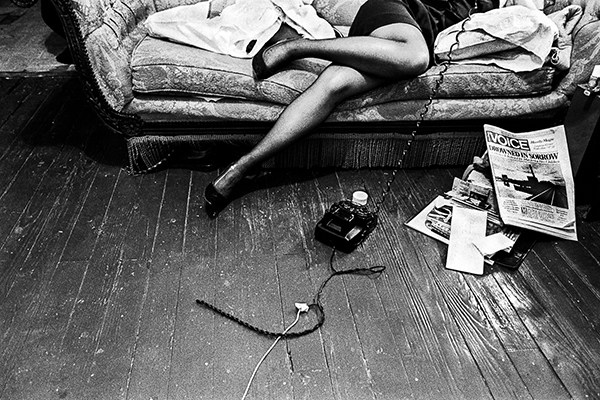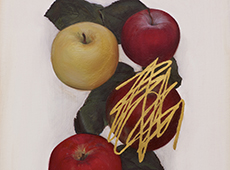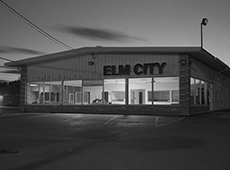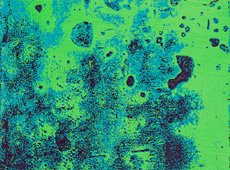…we only see what we want to see. Some say we only see what we already know. But I think more is possible, that we can be opened to deeper meanings, because all understanding comes through metaphor.

Ken Schles,
This is Audrey. She lived on my couch for about six weeks after her parents threw her out. She worked as a model for the then teenage fashion impresario, Andre Walker, a fixture in the downtown club scene. She was dating another friend, also named Andre. I asked the second Andre if he could watch my place while I was away for a few days. Back then you didn’t want to leave your apartment unattended for any length of time. If it got broken into (which was very likely) it would be left open, unattended, and everything in it would be for the taking. When I got back, Andre left and Audrey stayed on. The copy of Vogue and an issue of the Village Voice with the headline “Drowned in Sorrow” were splayed upon the floor at some point during her tenure.
I named my book, Invisible City, after Italo Calvino’s book, Invisible Cities, a book that imagines conversations between Marco Polo and his host, the Chinese Mongol Emperor Kublai Khan. Polo conjured up imaginary cities for Khan, a ruler whose empire was so vast and unknowable that he believed the tales his visiting traveler offered. The cities Polo described in Calvino’s book were metaphors, fantastic cities of the mind. A beauty of Calvino’s book is that it tells imagined tales of imagined cities from an imagined encounter, opening us up to the metaphoric possibilities of cities: Cities as conceptual constructions, as theoretical and poetic places where innate structure anticipates and precipitates fantastic encounters: where we find stories of cities and signs; cities and memory; cities and desire.
…we only see what we want to see. Some say we only see what we already know. But I think more is possible, that we can be opened to deeper meanings, because all understanding comes through metaphor.
I also believe that what we observe in cities is ofttimes an overt manifestation of projections and signs: veiled metaphoric conceptual constructions of the mind. For cities, in their vastness, in their impossible and multitudinous juxtapositions, often directly reflect psychic projections and states of mind. True this: we only see what we want to see. Some say we only see what we already know. But I think more is possible, that we can be opened to deeper meanings, because all understanding comes through metaphor. Cities are the perfect foil for us. They overtly and metaphorically reflect what often cannot be spoken of, deep within the reaches of our minds. Cities may be physical entities that paint an indelible mark upon our minds, but also, just as often, they reflect our minds intimately and inimitably.
I don’t know where Audrey is today, but back then I saw her as a beauty “drowned in sorrow” as she lay upon my couch. I begin Invisible City with an excerpt from Lewis Mumford:
*Lewis Mumford, The Culture of Cities (New York: Harcourt, Brace and Co., 1938)
Ken Schles is the author of five monographs. His latest photobooks, Invisible City and Night Walk, both published by Steidl, are windows into a lost pre-Internet 1980s New York bohemia. His photographs and books have been exhibited and collected by more than 100 museums and libraries worldwide.
“Ken Schles Invisible City/Night Walk 1983-1989” is on view at the Howard Greenberg Gallery through March 14th, 2015
Editor’s Recs
Watch: Night Walk book trailer; Invisible City book trailer
New York Times interview and portfolio | 80s NY Revisited
Los Angeles Review of Books video interview and artist profile
New York Magazine “The Approval Matrix”
The Wall Street Journal “A Grittier East Village Comes Back Into Focus”
American Suburb X Interview: Invisible City, Night Walk and Existential Impulses
Invisible City and Night Walk selected photobooks of the year in TIME, Mother Jones, Vogue Italia
Visit: http://www.kenschles.com
Subscribe to Tilted Arc
If you like this story, please consider subscribing. We are sticklers for privacy.
We will never sell or share your e-mail address.



